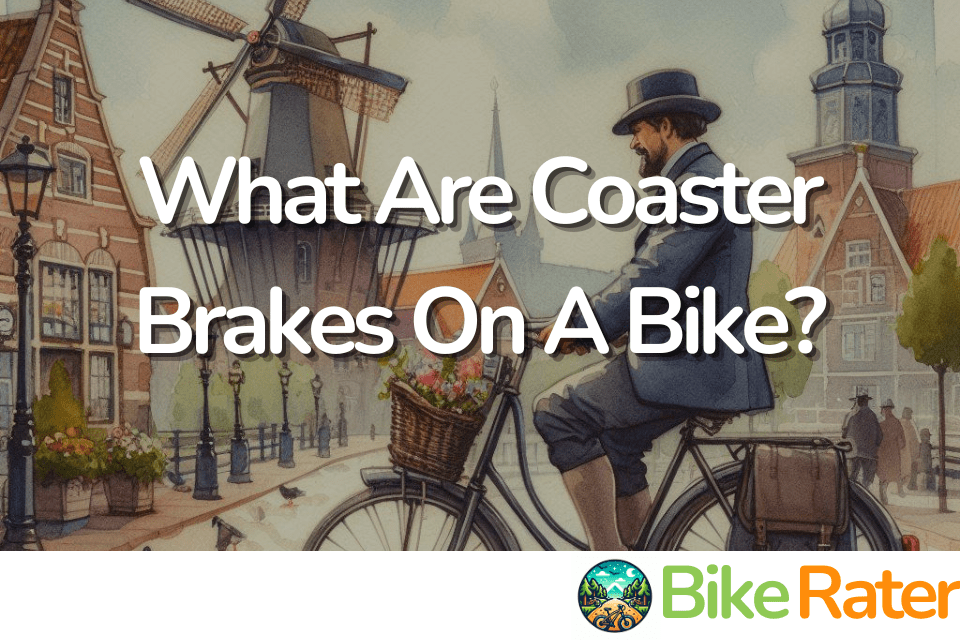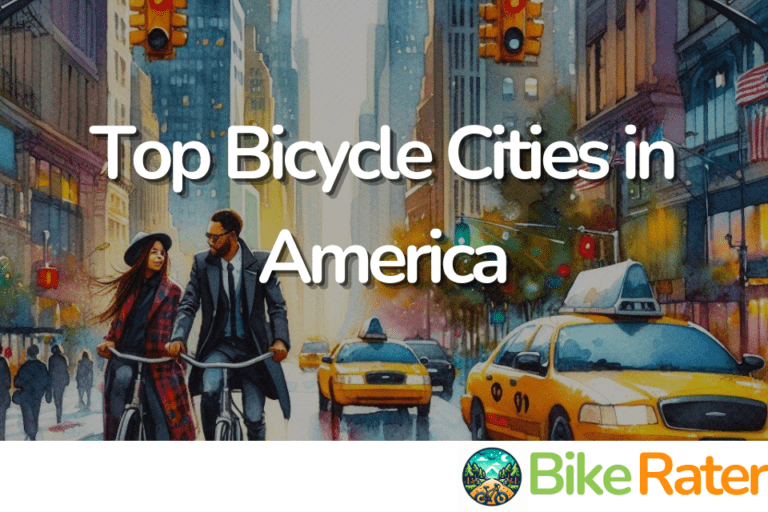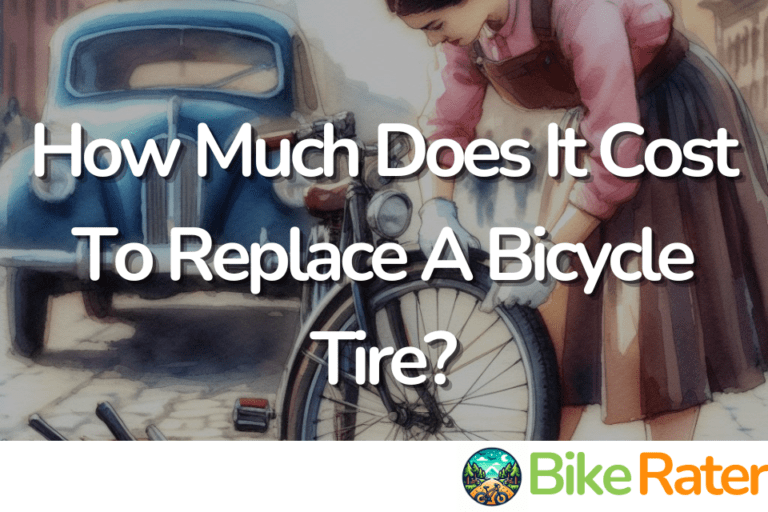What Are Coaster Brakes On A Bike? Coaster Brakes vs Hand Brakes
Key Facts:
- Simplicity Reigns: Backpedal brakes offer intuitive operation and low maintenance, perfect for laid-back rides and budget-friendly bikes.
- Control Conundrum: Limited stopping power and lack of modulation make them less ideal for high-performance riding or diverse terrain.
- Know Your Rider: Choose coaster brakes for casual cruises, young riders, or cost-conscious adventures. Embrace hand brakes for precise control, safety, and tackling any terrain.
Intro
Remember the days of mastering the backpedal skid? Coaster brakes, the OG stoppers of the cycling world, might seem simple, but there’s more to them than meets the eye. Dive in and discover if these classic brakes still hold up in today’s world, or if hand brakes have truly stolen the show!
What Are Coaster Brakes?
Ever hopped on a bike and cruised backward without pedaling? Or maybe mastered the art of the perfect skid stop with a push of your feet? If so, you’ve experienced the magic (and maybe a few near-misses) of coaster brakes.
Definition and function:
Coaster brakes, also known as backpedal brakes, are a type of bicycle brake system activated by pedaling backward. Unlike hand brakes, which use levers and cables, coaster brakes rely on an internal mechanism within the rear hub. When you push back on the pedals, this mechanism engages, creating friction that slows and eventually stops the wheel. It’s a simple, no-frills system that’s been around for over a century.
Brief history of coaster brakes:
Coaster brakes emerged in the late 19th century, offering a more intuitive and accessible braking system than the rim brakes of the time. They quickly gained popularity, especially on children’s bikes and cruisers, thanks to their ease of use and low maintenance requirements. Throughout the 20th century, they remained a dominant force in the cycling world. However, the rise of multi-speed bikes and the introduction of more powerful hand brakes saw their use decline in recent decades. Still, coaster brakes hold a special place in the hearts of many cyclists, and they continue to be found on some bikes today, particularly single-speed models and comfort cruisers.
How Do Coaster Brakes Work on a Bicycle?
While seemingly simple on the surface, coaster brakes hold a hidden world of mechanical wizardry within their hub. Strap on your metaphorical goggles as we take a closer look at this ingenious design:
Detailed description of how they work:
Imagine the rear hub of your bike as a complex puzzle box. Inside, you’ll find several key players:
- Driver: This cog connects to the chain and rotates with your pedaling.
- Pawls and ratchets: These ingenious mechanisms allow the wheel to spin forward freely while locking it in place when you pedal backward. Think of them as tiny one-way doors.
- Expander: This component translates your backpedal force into outward pressure.
- Brake shoes: These shoes rub against the inner rim of the hub, creating friction and ultimately slowing the wheel.
Now, the magic happens:
- Pedaling forward: As you pedal normally, the driver engages with the pawls, allowing the wheel to spin freely. The expander remains relaxed, and the brake shoes stay away from the hub rim.
- Backpedaling: When you push back on the pedals, the driver and pawls disengage. This throws the expander into action, pushing outward like a spring.
- Engaging the brakes: The expander’s pressure forces the brake shoes to press against the hub rim. Friction kicks in, slowing the wheel’s rotation until it comes to a complete stop.
It’s a clever interplay of gears, springs, and friction that brings your trusty steed to a halt. But remember, knowledge is power (and safety!), so next time you grab a bike with coaster brakes, you’ll appreciate the hidden engineering marvel in your hands (or rather, feet).
Types of Bikes that Use Coaster Brakes
Coaster brakes might not be everywhere these days, but they still grace various types of bikes, reminding us of simpler times. Let’s hop on different cycles and discover where you might encounter these backpedal beauties:
Examples of bikes with coaster brakes:
- Children’s bikes: For young riders still mastering balance and coordination, coaster brakes offer a safe and intuitive way to stop. They don’t require hand-eye coordination, making them perfect for those learning the ropes.
- Single-speed cruisers: These laid-back bikes are all about leisurely rides and enjoying the scenery. Their simple design often pairs well with coaster brakes, contributing to a low-maintenance and relaxed feel.
- Comfort bikes: Designed for upright posture and comfortable rides, these bikes sometimes come equipped with coaster brakes for a casual, no-fuss experience.
- Cargo bikes: Some heavier cargo bikes, especially single-speed models, utilize coaster brakes for their simplicity and ability to handle extra weight.
- Beach cruisers: Imagine cruising along the shoreline with the wind in your hair and the sand between your toes. Many beach cruisers feature coaster brakes, adding to the carefree vibe.
- Fixed-gear bikes: Although less common on fixies due to their track origins, some single-speed fixed-gear bikes might utilize coaster brakes as a simple braking option.
While not as versatile as their hand-brake counterparts, coaster brakes still have their niche, offering a nostalgic charm and simple functionality on specific bike types. Remember, sometimes the most familiar paths can lead to surprising discoveries!
Coaster Brakes vs. Hand Brakes
Coaster brakes and hand brakes – two braking systems, two distinct experiences. But which one reigns supreme? Well, the answer, like many things in cycling, isn’t black and white. It all boils down to your pedaling preferences and the kind of ride you envision. Let’s crank up the handlebars and compare these braking rivals, head-to-head:
Feature Face-Off:
| Feature | Coaster Brakes | Hand Brakes |
|---|---|---|
| Activation | Backpedaling | Levers on handlebars |
| Complexity | Simpler system | More intricate components |
| Maintenance | Low maintenance | Requires periodic adjustments and parts replacement |
| Cost | Generally cheaper bikes | Often found on higher-priced bikes |
| Number of wheels braked | Rear wheel only | Both front and rear wheels |
| Modulation | Limited control over braking force | Precise control over braking power |
Pros and Cons of Coaster Brakes:
Pros:
- Simplicity: Easy to use, especially for young riders or those new to cycling.
- Low maintenance: Requires minimal upkeep to keep them rolling smoothly.
- Cost-effective: Often found on more affordable bikes.
- Casual cruising: Perfect for laid-back rides where stopping isn’t your top priority.
Cons:
- Limited control: No fine-tuning, making it harder to brake on descents or in slippery conditions.
- Rear-wheel only: Less stopping power compared to braking both wheels.
- Skid risk: Backpedaling too hard can lock the wheel, causing skids and potential loss of control.
- Not ideal for all bikes: Less common on performance or multi-gear bikes.
Pros and Cons of Handbrakes:
Pros:
- Powerful braking: Precise control for confident stopping on any terrain or weather, with both rim and disc brakes.
- Modulation: Adjust braking force for gradual stops or quick halts.
- Safer descents: Better control, especially on downhill rides.
- Versatility: Suitable for various bikes, from roadsters to mountain bikes.
Cons:
- Learning curve: Requires hand-eye coordination for smooth braking, especially for beginners.
- Higher maintenance: More components to adjust and replace over time.
- Cost: Often found on more expensive bikes.
- Not as carefree: May require more attention and control compared to coaster brakes.
Who Rocks with Coasters?
- Young riders: Simple and intuitive, perfect for mastering balance and coordination.
- Casual cruisers: Relaxed rides where ease of use trumps high-performance braking.
- Budget-conscious cyclists: Affordable option for laid-back cycling adventures.
Who Digs Hand Brakes?
- Performance seekers: Precise control for confident tackling of hills and rough terrain, with the ability to freewheel when riding down hills.
- Safety-first riders: Wanting maximum stopping power in diverse conditions.
- Multi-gear enthusiasts: Compatible with a wider range of bikes and riding styles.
Maintenance and Care of Coaster Brakes
Coaster brakes offer simple, low-maintenance stopping power. But even the most laid-back cruiser deserves some TLC. Here’s how to keep your backpedal brakes rolling smoothly and safely:
Coaster Care Tips
- Lube it like you love it: Regularly apply a thin layer of grease to the axle and brake mechanism according to the manufacturer’s instructions. This keeps things moving smoothly and prevents wear and tear.
- Tame the tension: Check the brake tension periodically. Ideally, the wheel should stop with moderate backpedal pressure without locking up. Adjust the tension screw as needed, but consult a mechanic if you’re unsure.
- Cleanliness is key: After a muddy ride, rinse off the brake hub to remove dirt and debris that can hinder performance. Avoid spraying directly with water, and use a brush and mild soap for stubborn grime.
- Listen to your bike: Pay attention to any unusual sounds like squeaking or grinding. These could indicate worn parts or improper adjustment. Don’t ignore them – address them promptly for safe riding.
Troubleshooting
- Brake not engaging: Check for loose cables or a broken spring within the hub. If you’re mechanically challenged, consulting a bike mechanic is the best bet.
- Excessive force required: This could indicate worn brake shoes or misaligned components. Inspect the shoes for wear and consult a mechanic for potential adjustments.
- Squealing symphony: Dirt, debris, or worn brake shoes can be the culprit. Clean the hub, inspect the shoes, and consider replacing them if they’re worn.
- Lockup blues: Over-adjusting the tension can cause sudden wheel lockup. Ease the tension screw slightly and test the brakes again. Remember, gradual, controlled stopping is key!
Remember: While coaster brakes are generally low-maintenance, they still require occasional attention. By following these simple tips and addressing issues promptly, you can ensure your backpedal brakes deliver safe and smooth stops for many miles to come. And who knows, you might even master the art of the perfect skid stop along the way (just practice in a safe, controlled environment!).
Safety Considerations of Coaster Bikes
Coaster brakes offer a simple way to slow down, but remember, safety always takes the front seat (or should we say, handlebar?). Here’s how to use them effectively and minimize any potential risks:
Mastering the Backpedal
- Practice makes perfect: Before hitting the road, find a safe, open space to practice engaging and releasing the brakes smoothly. This helps you develop the muscle memory and control needed for confident braking.
- Mind the pressure: Don’t slam on the brakes! Apply backpedal pressure gradually to avoid locking the wheel, especially on slippery surfaces or downhill. Remember, a controlled stop is always better than an uncontrolled skid.
- Weather the elements: Wet or icy conditions can reduce traction and make braking more challenging. Be extra cautious and adjust your braking accordingly, leaving more space to stop.
- Know your limits: Coaster brakes offer less stopping power than hand brakes. Don’t attempt high-speed riding or technical terrain where precise braking is crucial. Choose suitable terrain and ride within your comfort zone.
- Embrace the gear: If you’re unsure about tackling a specific terrain with coaster brakes, consider using a bike with hand brakes for added control and safety.
Taming the Risks
- Rear-wheel focus: Remember, coaster brakes only affect the rear wheel. This means you have less overall stopping power compared to bikes with brakes on both wheels. Be mindful of this limitation and adjust your riding style accordingly.
- Skid stoppers: While skidding can be fun in controlled environments, it’s not recommended for everyday riding. It can lead to loss of control and potential accidents. Focus on smooth, controlled braking for safe stops.
- Maintenance matters: Regularly check and maintain your coaster brakes as outlined in the previous section. Worn parts or improper adjustments can compromise braking performance and increase safety risks.
- Be seen, be safe: Ensure you have proper lighting and reflective gear, especially when riding in low-light conditions. This helps you stay visible to other road users and enhances your overall safety.
By following these safety considerations and practicing responsible riding habits, you can enjoy the simplicity and charm of coaster brakes without compromising your well-being. Remember, safe riding is always the most stylish ride!
Final Thoughts: Coaster Brakes – Cruising Companions or Outdated Relics?
Coaster Coast-Up:
So, we’ve pedaled through the history, mechanics, and considerations of coaster brakes. Let’s recap their key features:
- Simple and intuitive: Easy to use, especially for beginners or casual riders.
- Low maintenance: Require minimal upkeep for smooth operation.
- Cost-effective: Often found on more affordable bikes.
- Limited control: Lack of modulation makes precise braking challenging.
- Rear-wheel only: Less stopping power compared to dual brakes.
- Skid risk: Backpedaling too hard can lock the wheel, leading to potential loss of control.
Gearing Up for the Future:
Coaster brakes might not be the all-terrain champions, but they still hold a special place in the cycling world. They offer a nostalgic charm, simple operation, and low maintenance, making them perfect for:
- Leisurely cruises: Laid-back rides where relaxed stopping beats high-performance braking.
- Budget-conscious cyclists: An affordable option for casual adventures.
- Young riders: Simple and intuitive operation for mastering balance and coordination.
However, for those seeking high-performance control, tackling varied terrain, or prioritizing safety, hand brakes reign supreme.
Ultimately, the choice between coaster and hand brakes comes down to your style and needs. So, grab your helmet, choose your braking system wisely, and hit the road! Remember, the most important gear is a smile and a sense of adventure – happy cycling!





